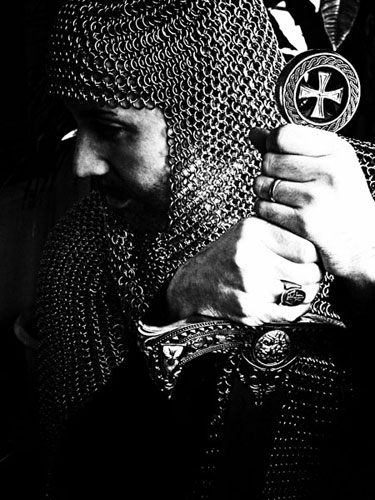
name: Furvus
genres: neo-classical, ancient music, epic music, soundtrack, neofolk, martial, ambient, opera
years active: 1998 / *2004 – (2008) – 2014 / present
bio: Without to be worry about first presenting the project to the public at all with the usual demos, promos, etc., in the autumn 1998 I begin working directly on what it’ll be the debut-cd “Deflorescens Iam Robur”. Split in four books (in all twenty chapters/tracks) and matched with an upsetting graphic dress, the album is a majestic concept and work of synthesis dedicated to the unforgivable decline of the Roman Pagan culture, embracing stylistically a millennium of music, from what could have been the martial compositions of the Imperial Rome up to the late Renaissance.
Result of a long philological research which allowed the recovery of the proper iconographic and lyric sources (complementary material of the concept and gathered in the grand digibook format I chose) and, of course, the historical-instrumental ones, the opus completes its explication also through some sonorous experimentations suggested by a modern artistic sensibility which tried to re-propose with present-day means the decadent atmosphere that pervades the imaginary cultural iter, a sort of magniloquent Pagan soundtrack.
It tooks me almost two years, since the album was conceived and created in a moment where there were no telematic facilities (at that time when you needed to find a text or image you had to visit and spend days in the libraries) or informatics (the album was recorded in an analogue way, without computer and midi facilities).

After that with a similar attitude I worked on its follow up: “Veluti Peregrinus in Antiquitatis Memoriis”, unluckily lost (apart from a raw demo recording) during the terrible 2003 short circuit/system crash which caused the loss of 5 years of work and many albums.
The project was kept alive through exclusive tracks (I’ve to say often badly produced) realized for international samplers, but officially took a long break in 2004 (except for a track presented on OEC anniversary mega sampler, in 2008) and slowly resumes its activity around 2013, till to his solemn come-back (“Aes Grave”, published by Dark Vinyl in 2017.
Also this time the album presents the distinctive features since the beginning of his style: the total absence of sampled parts (everything is played and in real time, if not improvised), as well as an intensive use of real acoustic instruments and – above all – the human performance of all the voices (from the lead singer to the choirs, up to 16 choral elements parts), following what have always been my vocal research studies on polytimbricity and which have made the project something quite unique in the world production panorama.
In this period of time the cinematic vein has become more pronounced, to the point where Furvus’ style (although with thematic and technical variations) was chosen for the sonorization of some cinematographic works. But that’s another story …
